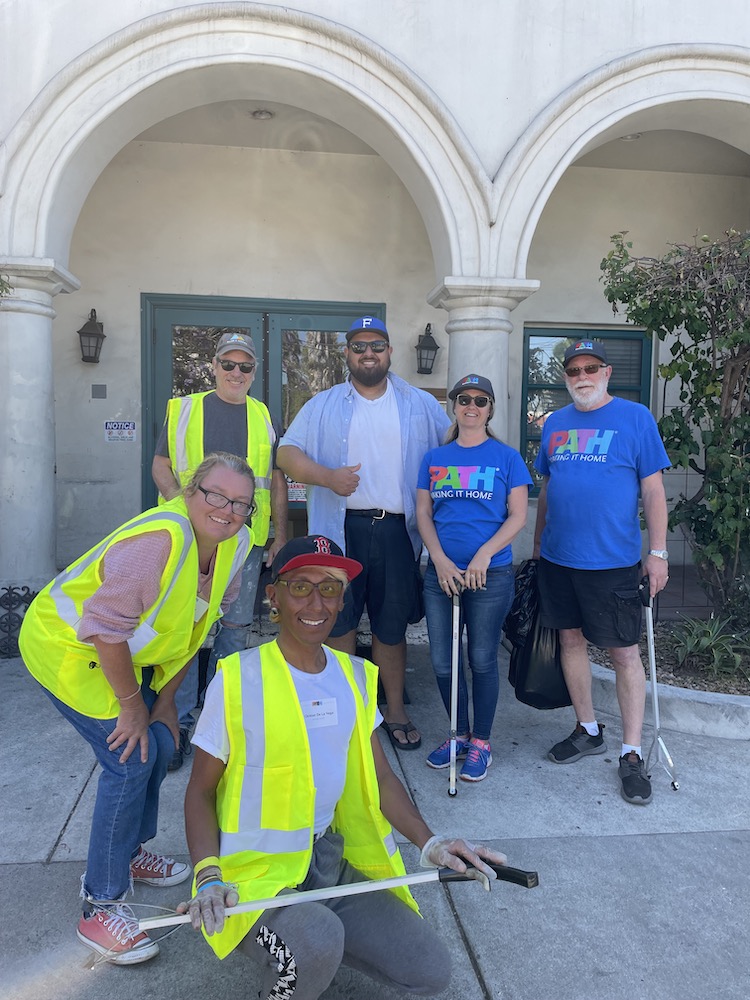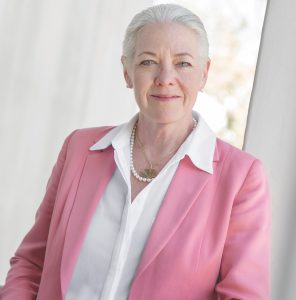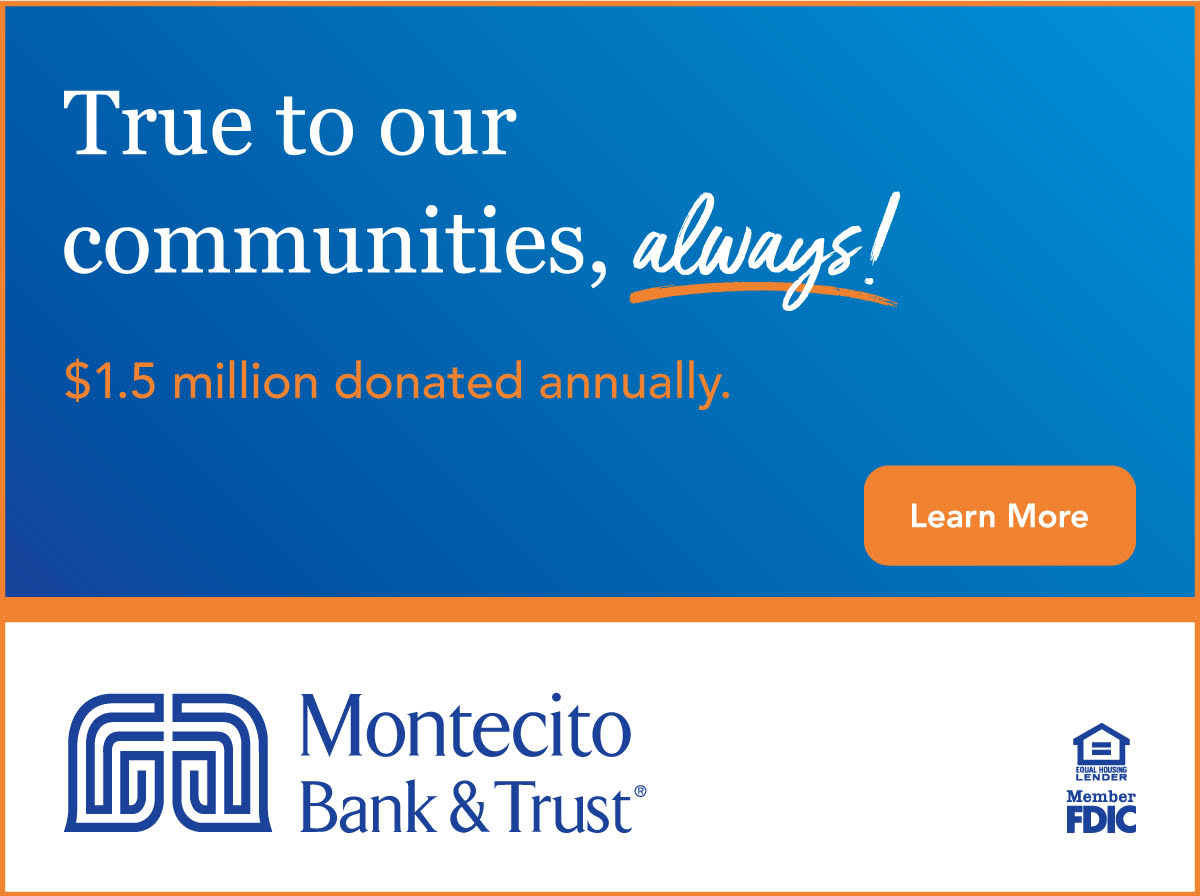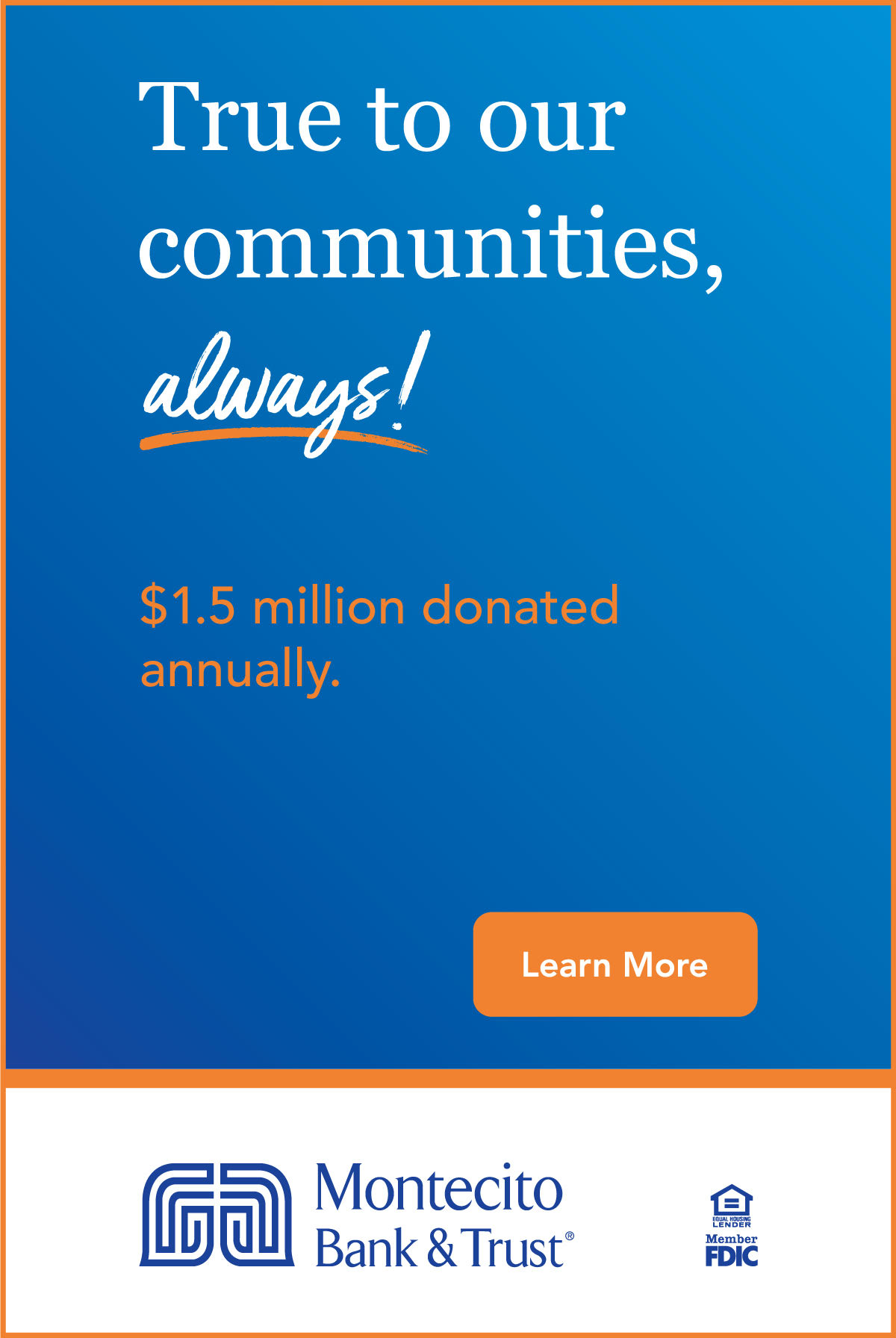PATH

A significant number of nonprofits and other organizations have been working to end homelessness in Santa Barbara and across California. PATH has had a jump on nearly all of them, as its mission is built right into its name – which is an acronym for People Assisting the Homeless.
PATH started small and simply with a letter written in 1983 by Claire and Rev. Charles Orr, who urged the local community to address the ever-increasing issue of homelessness. One night that December, 60 people gathered together to figure out how to help people who were experiencing homelessness in their neighborhoods. The group started by distributing food and clothing to people living on the streets. As homelessness continued to grow nationwide, research revealed that Housing First—a best practice model that first connects people to permanent housing and then focuses on stabilization through voluntary supportive services – proved more effective. Now, more than 40 years later, PATH is providing services in more than 150 cities in five regions, sporting upwards of 1,500 units of permanent supportive housing that have either been completed or are in the pipeline.
PATH’s work is to help people find permanent housing, and provide case management, medical and mental healthcare, benefits advocacy, employment training, and other services to help them along the way, as well as to maintain their homes stably. Since 2013, the nonprofit has connected more than 9,000 people to permanent homes.
Here in Santa Barbara, PATH joined forces with Casa Esperanza, which had a long-standing reputation in town. The joining of forces has possibly led to a lingering misunderstanding. “Folks in Santa Barbara grew familiar with Casa Esperanza,” says Tyler Renner, PATH’s senior director of communications. “People may have thought of Casa Esperanza as a day center or a soup kitchen – two terms I’d heard used. But PATH is completely different. We’re an interim housing site, we’re a provider of wraparound support services, we assist in housing navigation…”
“We all collaborate closely, everyone provides their own set of services in their own way,” explained Liz Adams, PATH’s Regional Director for the Santa Barbara area. “Something that makes us special is that all of our programs and services statewide follow a low-barrier harm reduction model. What that means in practice is that our 100-bed interim housing on Cacique Street has almost no barriers for someone to get shelter.”
PATH’s method is a continuum, starting with outreach toward the homeless population wherever they are.
“Our people are literally out there on the street every day talking to anyone who they believe are experiencing homelessness, trying to build relationships to get them to come off of the street,” Adams said. “They can even bring their pets. It’s about getting them inside so that we can more easily work with them.”
PATH Santa Barbara also doesn’t close during the day; a practice still used by some shelter facilities and based on old models, Adams said. Instead, the temporary residents get three meals a day as well as intensive case management on site.
“We help them with everything from putting together all of their documents to getting into permanent housing and working towards getting a job if they’re not employed; increasing their income; accessing healthcare services; getting connected to CalFresh and all of the benefits that they’re eligible for. Our housing navigation team helps them find housing that is going to be appropriate for each person we work with.”
While the residents are not required to participate in mental health services, NA or AA classes, or take their medication, or even be sober all of the time, the harm-reduction component includes encouraging them to follow a healthier path.
“We know that it’s easier for them to connect to services if they are staying sober and participating in mental health services – so we do work with them on reducing the amount of harm that they are doing to themselves. But we’re all about meeting people where they’re at, which changes day to day and is different for every single person. We get to know them and follow their lead. We follow their guidance to help them create their own personal goals and then figure out a plan of how we’re going to help them reach them.”
The outreach part got a big boost when one Giving List philanthropist-reader recently donated funds for PATH to purchase a van, allowing for much more comprehensive mobility in the field. The new mobile unit will amp up the organization’s ability to provide instant assistance, Adams said.
“Previously, all we could do was provide bus tokens or an EZ Lift ride for someone who needed to get to a doctor’s appointment and other services,” she said. “Now we’ll be able to just bring them to the appointment, which helps people feel more confident, safe, and secure in going to those appointments because we’re there right alongside them.”
The van is also equipped with outreach supplies, including water hygiene kits, sleeping bags, blankets, socks – even pet food,” Adams said. “It really helps cement the relationship and bring them closer to coming in.”
But there are so many other programs that are in need of more funding, including the basic expenses involved with running the interim facility. To that end, PATH has two fundraisers coming up in the next month, including a special one to mark its 40th anniversary.
PATH’s 3rd annual A Toast to Home gala takes place on May 30, this time in town at the Santa Barbara Historical Museum. It will be a spectacular evening of local wines, delectable regional cuisine, and music for dancing. But the centerpiece is PATH’s inspirational program about its services for the homeless.
“We really want to encourage people who have not yet engaged with us,” Adams said. “You support us just by attending, but it’s also a great way to learn more about the work that’s happening and for people who are considering getting involved to learn more. We have a whole team from PATH there to share stories and to share about all the work that’s going on.”
Additional sponsors can help the nonprofit beyond its basic services to provide much-needed upgrades to the facility, she said.
Meanwhile, PATH Giving Day is a 24-hour celebration of home and the power of giving that takes place from the wee hours stroke of midnight to 11:59 pm on May 15. The idea is to have members of the PATH community and newcomers across California collaborating in a variety of ways to reach an ambitious goal of raising $200,000, which Adams said translates to ending homelessness for 40 individuals. The event is modeled after Giving Tuesday to be held in the middle of Affordable Housing Awareness month.
“The way that we end homelessness is by providing affordable housing,” Adams said. “Coming together for one 24-hour period goes back to how PATH started 40 years ago, people just deciding that we have to do something about it.”
Details on how to participate are available on https://fundraise.givesmart.com/e/M-eFUA?vid=14zbta or visit https://epath.org
PATH
Donate now!
pathsantabarbara.org
(805) 455-2331
PATH Santa Barbara Regional Director: Elizabeth (Liz) Adams
Mission
Our mission is to end homelessness for individuals, families, and communities. PATH envisions a world where every person has a home. Our values include creative collaborations, strategic leadership, empowerment for all, and passionate commitment.
Begin to Build a Relationship
We know you care about where your money goes and how it is used. Connect with this organization’s leadership in order to begin to build this important relationship. Your email will be sent directly to this organization’s Director of Development and/or Executive Director.
Homelessness affects the entire community, and by working together, we can foster a proactive and compassionate environment where everyone has the opportunity to thrive and a place to call home. Supporting PATH means contributing to both immediate relief for those experiencing homelessness and long-term solutions that address its root causes.
Building a New Food Facility
Although PATH counts some 300 monthly kitchen and food sorting volunteers, the work takes place mostly on plastic folding tables and makeshift equipment in a space that’s not dedicated to the process.
The nonprofit seeks $375,000 to build the brand new PATH Santa Barbara Food Resource Center, a dedicated food storage and distribution space as an addition to the existing PATH facility. The center would allow the nonprofit to more efficiently receive, sort, process, and provide food to the hundreds of participants it serves across its programs as well as redistribute a big percentage back out to the community.
“With that facility we could really ramp up our food rescue program and be able to better support so many more people in our community, and save a lot more food from being wasted,” says Liz Adams, PATH Santa Barbara’s regional director.
For someone to stay in the interim housing program for a full year, receiving three meals per day, hygiene supplies, case management, and a 24/7 home, it costs approximately $30,000 per person. With governmental budget cuts looming, private donations will have to make up the difference as costs rise with inflation. “We’re rallying that community support,” Adams says. “It really does take the whole village to do this work.”
Key Supporters
Sue Adams
Mark Asman
Denny & Bitsy Bacon
The Balay Ko Foundation
Nancy Fiore
Ron & Carole Fox
Goleta Presbyterian Church
Geoff Green
Daniel Lane
Don & Kelley Johnson
La Centra-Summerlin Foundation
Brian McTeague
Juliana Minsky
Glen Mowrer & Bernice James
Sheridan Taphorn
The Towbes Foundation
The Vollmer Family Foundation
Dylan Ward
Devon Wardlow
Wolfe Lyons Family


